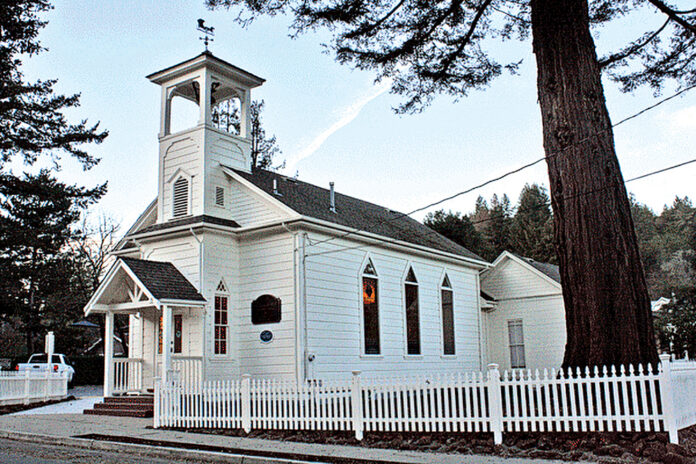Each year, the graduate students of UCSC’s Science Communication Program research a different topic for the first GT issue of the new year. This year, with so much abuse and misuse of science floating around, especially on social media, we decided to take on the topic of pseudoscience. It’s a wildly varied list of subjects, and whether they’re fun and seemingly harmless, have implications for believers’ pocketbooks, or are the basis for sinister conspiracy theories, it’s edifying to know their scientific basis—or lack of one—and to consider why their popularity has endured.
Brain supplements
Mental exercise? There’s no supplement to replace keeping your brain healthy and active. Despite this, many health supplement labels claim to ward off dementia and other neurological decline. Their marketing drives global annual revenues of $8 billion.
We all want super-powered brains—or at least limitless memories. It’s personal for me: Ten years ago, I had a brain hemorrhage. I feared future damage and wanted to boost my chances to recover, so I foraged my way through the supplement aisle.
Today, I worry that my injury makes me more likely to get dementia later in life. In a quest to decide whether to take more supplements, I reached out to neurologist Joanna Hellmuth of UC San Francisco’s Memory and Aging Center.
“There really isn’t evidence to suggest that any particular vitamin or supplement can help improve or reverse cognitive changes,” says Hellmuth.
Unlike medications, supplements aren’t strictly regulated by the U.S. Food and Drug Administration (FDA). As a result, labels often make extraordinary claims like “clinically proven” or “studies show.” Companies also are protected by the Dietary Supplement Health and Education Act of 1994, which forbids the FDA from asking for supporting data.
“Our brains and our minds are very personal,” Hellmuth says. “We want to do what we can to protect them.” But the government lacks power to pursue bad supplement actors. So while your purchases probably are harmless, some might pose risks—such as hemorrhagic stroke from excessive vitamin E.
Proper sleep, a healthy blood pressure and mental and physical activity are better for the brain, neurologists agree. General health supplements such as fish oil, vitamin D and caffeine have shown positive impacts as well.
People considering supplements should consult their doctor. But drug store browsers should be aware: There’s no research to back the bright claims of neurodegenerative supplement manufacturers. There are plenty of free and safe things you can do to boost your brain—and, at the same time, your body.
—Emily Moskal

Chemtrails
Wispy trails of clouds laced across blue skies track the familiar paths of passing jets. Known as condensation trails, or “contrails,” they’re the aviation equivalent of visible plumes of steamy breath exhaled on a cold morning.
But many people believe they are something far more nefarious: “chemtrails,” contrails filled with chemicals intended to control the weather or the humans below. This conspiracy theory has spiraled into a kaleidoscope of Machiavellian government plots. Surveys show 40% of Americans believe these conjectures to some degree.
Proponents point to contrails lingering for hours as evidence of their unnatural makeup. However, contrails either vanish quickly or paint the sky with persistent stripes depending on atmospheric conditions alone: temperature, humidity and winds.
“There is no validity from a scientific perspective,” says veteran Bay Area meteorologist Jan Null.
Contrail science is simple, Null says. Warm water vapor produced during jet fuel combustion meets cold atmospheric air, creating strings of ice crystals that behave like high-altitude cirrus clouds.
“If the plane is going through an area of high pressure, [they] will linger,” says Null. High pressure leads to low winds and clear skies, he adds, making contrails stand out in the sky.
Chemtrail anxieties first arose in the 1990s from reports that the U.S. military had explored weather manipulation in combat zones. Seeding clouds to induce rainfall also aroused suspicions, but this method uses harmless chemicals like dry ice and silver iodide.
Recently, researchers have studied ways to reduce global warming by reflecting sunlight via materials dispersed in the atmosphere. This “geoengineering” science is legitimate, but still theoretical—with no connection to contrails.
In 2016, 77 qualified experts reviewed claims of chemtrail evidence. Atmospheric chemists scoured contrail photos, while geochemists examined alleged deposits with high levels of heavy metals. Their conclusions: Natural environmental variations and sampling errors explained every example.
Those aren’t chemtrails over the country club; they are the transient, innocuous marks of our constant desire to travel the globe.
—Elyse DeFranco
Cryonics
Floating feet-up, nestled in sleeping bags, chilled in tubs of liquid nitrogen, hundreds of corpses around the world await Frankensteinian reanimation. It sounds like a science fiction plot. And that’s because it is.
The practice, known as cryonics, involves packing the freshly deceased on ice, replacing their blood with antifreeze and preserving their bodies. The hope: One day, advances in medical technology will “enable full restoration to life and health,” according to the webpage of Trans Time, a cryonics facility in San Leandro—one of only a handful on the planet.
But there’s one small problem with this life insurance policy for dead people: It doesn’t work. Oh, and it costs around $150,000.
When scientists freeze biological samples, ice crystals take over. The crystals stab, dehydrate and over-concentrate cells. Cryobiologists often add chemicals to keep the cold water in a glassy hybrid state. This “vitrification” process safely preserves eggs when prospective mothers have their ovaries removed, for example. On this small scale, the technique works.
But if we can freeze and revive pre-humans, why can’t we do it for post-humans?
“The biggest limitation is that you have to get it to cool down very rapidly,” says Kimball Pomeroy, scientific director at the World Egg and Sperm Bank in Scottsdale, Arizona.
Objects freeze and thaw from the outside-in—think of the icy core of your warming chicken breast. To protect tissues, cells must all freeze together. But that’s a problem for larger samples. For dense, complex structures like the brain, there’s no way to freeze everything quickly enough to keep cells alive and slowly enough to prevent permanent damage.
Cryonics practitioners acknowledge this dilemma, but they sell false hopes that scientists of the future will work it all out.
“There’s no recovering from damaged tissues once the cells have been lysed by ice crystals or poisoned by chemicals,” Pomeroy says. “It’s wishful thinking; it’s not science. It’s taking advantage of humans who have a desire not to die.”
—Zack Savitsky

Crystal Healing
As long as humans have been alive, crystals and gems have enchanted people. We collect them for jewelry and art—or, for some believers, for their possible healing properties.
This billion-dollar industry has grown in popularity since the cosmic 1960s. Crystal healing now intrudes on everyday life, from celebrity social media to your grandma’s shelves.
Crystal followers believe a positive energy from these minerals flows to your body, displacing any negative energy. Healers place carefully chosen crystals on your skin to absorb negative energy and rebalance your life—as their promotional materials claim.
However, practitioners and marketers assign different healing properties to the same crystals and gems. It’s all quite confusing. Some sellers say the best healing crystals are the ones that call out to you, and that bigger is always better.
But is there any science to this? When crystal healers talk about energy, it’s not the same energy that UCSC geophysicist Elise Knittle thinks about. “They don’t mean the same thing we mean, in a physics sense,” says Knittle, who has studied Earth’s minerals for her entire career.
Crystals are subjected to myriad forces and energy. “I throw the crystal at you. It’s got kinetic energy,” Knittle says. “If I hold the crystal, it has gravitational potential energy. But crystal healers think about energy more like an ancient spiritual practice. And that’s fine. But those are two different things. There’s really no link between them.”
Instead, Knittle pinpoints the psychological side: Crystal healing is calming. “It’s like meditation,” she says. “That does help, if you’re feeling anxious. I think it has a very strong placebo effect.”
Indeed, studies have shown that crystal healing induces a placebo effect in many people. But there is no evidence crystals “heal” the mind or the body in a medical way. Despite the faith you might place in these rocks, please seek professional help if you are struggling with mental health or a life-threatening disease.
—Brian Phan
Cryptozoology
Grab your crappiest camera and your sense of whimsy—we’re going Bigfoot hunting. A hairy human-esque creature, Bigfoot purportedly strides through North American forests on two legs and tantalizes cryptozoologists everywhere.
Cryptozoology is a subculture that seeks convincing signs of cryptids—creatures of lore whose existence has never been proven. While Bigfoots and their globe-spanning cousins like the Yeti are iconic, many regions harbor similar tales. Couldn’t our serious world use a few clairvoyant mothpeople, mislaid plesiosaurs or antlered bunnies?
These creatures wouldn’t be cryptids if we had reproducible evidence that they live outside of people’s hopes. Despite the ubiquity of smartphones and trail cameras, no one has captured a high- or even regular-quality photo of Bigfoot. Nor have they identified its remains, fossils or hairs.
But this doesn’t stop followers from searching. A wall-spanning map in the Bigfoot Discovery Museum in Felton tracks alleged Bigfoot encounters. About two dozen pins perforate the Santa Cruz Mountains. The museum displays videos, plaster footprints and ephemera to inform guests about bestial reports and to bolster local investigations.
Adrienne Zihlman, a celebrated primatologist and professor emerita of anthropology at UC Santa Cruz, says good scientists should fairly assess new evidence that challenges their understanding of the world. The problem is how seldom new Bigfoot evidence arises. “I’d be happy with the skeleton,” Zihlman says. “To understand it more, you’d need a live one or the whole body.” Instead, she’s seen the same grainy photos for decades.
Other claims haven’t stood up to scrutiny. In 2012, a group of cryptozoologists analyzed hair from a Texan “Bigfoot” with genetic tests. Mainstream scientists rejected their findings. So did other cryptozoologists, who showed the hairs came from a bear, a human and a dog.
Unlike other pseudosciences, cryptozoology tends to capture hearts rather than wallets. A handful of low-quality photos and some dog hairs don’t cut it for science, but keep an eye out for Bigfoot if it brings you joy.
—Graycen Wheeler
DOWSING
Perhaps you’ve seen them walking across the fields, clasping a rod or two, seeking signs of hidden water: the dowsers.
Dowsing, also known as water witching, is a form of divination that goes back thousands of years. Dowsers walk with one Y-shaped or two L-shaped sticks, scanning the ground until the sticks turn downward or cross over each other. These twitches unveil the whereabouts of underground water, the stick handlers say, claiming they have a kind of sixth sense or that their hands transmit external forces like the sliding piece on a ouija board.
Dowsers are in high demand in California, especially during droughts. They charge about $1,000 to scout lands and suggest where to dig new wells. The West Coast Dowsers even held their annual conference in Santa Cruz back in 2012.
But despite dowsing’s popularity, you’re as likely to find water by hovering sticks above the ground as you are by random chance, says Andy Fisher, a UCSC hydrologist who studies groundwater recovery.
“There are no scientific studies that support the use of dowsing,” says Fisher.
Groundwater, which dowsers claim they can detect through 50 feet of earth or more, seeps through underground formations known as aquifers. The search for groundwater during droughts has driven desperate landowners to drill deeper into depleted aquifers in a never-ending race to the bottom.
These landowners recruit dowsers who claim they can find water by feeling heat, a chilling sensation, or changes in the energy surrounding their bodies that cause their hands to quiver involuntarily and move their rods. Dowsers may be cheaper to hire than geologists or prospectors, but their services amount to paying a grand for gut feelings.
Fisher sticks to known science. He is involved in engineering projects that aim to replenish the region’s groundwater supply with excess surface water. If such efforts fail, soon there will be little groundwater to find—using dowsing rods or otherwise.
— Guananí Gómez-Van Cortright

Ghost Hunting
Moisture clings to the headstones in Santa Cruz’s Evergreen Cemetery. Something moves in your peripheral vision; your body stiffens. Fog and fear hang in the air as you wonder whether a long-gone resident is rising once again.
This site appears perfect for the kinds of ghost investigations that make the Bay Area a hotspot for ghost hunting. But be aware: This is a $100 million tourism industry, says Dallas psychologist James Houran. During his 25 years of studying paranormal claims, Houran has uncovered the recipe behind the lure of commercial ghost hunts.
One ingredient is physical: Dark and dilapidated locations steal the scenery in every scary movie. But the psychological aspect is the most misleading element—especially if you’re prone to believing in ghosts. During your visit to a “haunted” spot, you partake in alleged encounters through your emotions and reactions, Houran says. By helping to “shape the story,” you trigger higher sensitivities to stimuli—leading to interpretations that seem, well, unreal.
Your role may involve another key factor: props. Gadgets featured in ghost tours are essentially toys, Houran says. Gizmos that beep and blink deceive you and conflate entertainment with science. Legitimate environmental psychologists use professional gear to measure variables like electromagnetic fields, temperature and air quality—not to prove whether ghosts exist, but to evaluate how these conditions induce “haunted” experiences.
In the end, nearly all ghostly evidence immediately falls apart under scrutiny, Houran says. Mysterious orbs floating through pictures are dust particles reflecting light. Other photos are faked or staged. Houran’s equipment has never spotted anything science can’t explain.
So the next time you stay at our own seemingly supernatural Brookdale Lodge, sleep peacefully. Houran’s research promises no spectral interruptions.
“I would love to meet a paranormal ghost, because I have a lot of questions to ask,” he says. “I have yet to see any evidence that convinces me of what psychology and physics can’t already explain, but I hold out hope.”
—Brittney J. Miller

Numerology
If numbers could talk, numerologists would be their interpreters. Several sects of numerology exist; their core tenet is that the unique symbology of numbers guides our lives. But do numbers truly carry significant weight? Or are our pattern-driven minds just looking for meaning?
As with astrology, the foundation of numerology utilizes your birthday. Summing the digits allegedly reveals important traits about your character and life path. Practitioners also assign the numbers 1-9 to the alphabet to numerically decode words like your name. They claim any repeating numbers contain valuable messages.
Let’s use Leonardo DiCaprio as an example. Born November 11th, 1974, Leo’s life path formula would be 11 + 11 + 1974 = 1996. Because numerology operates on the numbers one through nine, keep adding until a single digit is reached: 1 + 9 + 9 + 6 = 25; 2 + 5 = 7. Seven supposedly embodies knowledge and a quest for truth.
Maybe that’s why Inception seemed so well cast.
Or maybe it’s just a trick of the mind, says Peter M. Nardi of Pitzer College in Claremont. A Ph.D in sociology and a numerology-naysayer, Nardi explains that people have a tendency to agree with vague, universal descriptions bestowed upon them—a psychological phenomenon known as the Barnum effect. Named after P.T. Barnum, it refers to the tendency to accept information as true, even if it’s so broad it could apply to anyone. It’s the driver behind tarot, horoscopes, and any system that boils down the complexity of personality to a few phrases.
“[Numerology] emphasizes something that’s devoid of social context. It’s not focusing on the reasoning,” says Nardi. Among its flaws: Numerology doesn’t stand up to scientific investigation. It lacks the ability to explain nuances such as name changes, or the arbitrary assignment of numbers to the letters of our language. Nor can anyone prove or vet the random traits attributed to those numbers.
Rather, numerology aligns with beliefs we already hold, or would like to be told. If you plan on using numerology to make a major life choice, do the math: “It’s confirmation bias,” explains Nardi. “People see what they want to see.”
— Jude Coleman

TAROT CARDS
Your past, present and future—it’s all in the cards. Or is it?
Tarot cards are allegedly a divine tool that reveal insights from your life and foretell the future. After thinking of a question, you shuffle 78 intricately illustrated cards and select three face down. With help from a tarot reader or a guidebook, you interpret your cards’ meanings to answer your query.
Some believers read their own cards—or consult an app—to assist with everyday decision-making. Others sink big bucks into psychic tarot reader consultations, then make life-changing decisions based on what they’re told. The cards supposedly channel your spiritual wisdom; they uncover your deepest thoughts and consciousness. At least, that’s the promise.
Tarot believers think they’re “tapping into something more truthful or objective,” says psychology graduate student Spencer Mermelstein of UC Santa Barbara. “It’s not being filtered through a person just telling you something, but this impartial source.” These seemingly unbiased cards help people trust a fated outcome.
However, tarot readings are usually vague. Believers’ tendency to think these sweeping interpretations are personalized is another example of the Barnum Effect at work.
“People are super free to read whatever they want to see in a horoscope or a tarot reading,” Mermelstein says.
Today’s tarot resurgence may stem from the “spiritual but not religious” movement. The cards offer an appealing connection to spirituality outside of organized religion.
Another catalyst is a hunger for answers during tumultuous times. Tarot’s uptick in popularity began in 2017, and experts speculate Donald Trump’s presidency and Brexit played a part. Many tarot readers say their businesses skyrocketed during the pandemic.
However, tarot began as a humble card game in the 15th century. In that spirit, enjoy reading tarot cards, but don’t let them influence your decisions. Remember, it’s all fun and games.
—McKenzie Prillaman






















